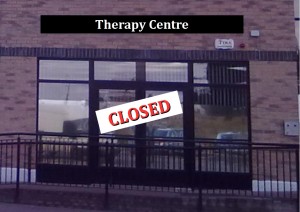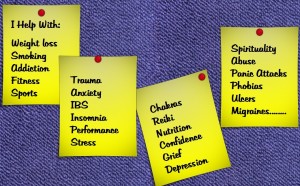
The way to Succeed as a Therapist or Coach?
Once you have a few clients, they’ll tell lots of people and word of mouth will spread!
Might this be the biggest myth of all in how a therapist gets busy?
 Firstly it hugely depends on what you do. Some things are both obvious and something to be proud of: things like weight loss, stopping smoking, getting over an obvious physical issue like back pain etc. Friends will ask how they did it, the people themselves will usually be very happy that it worked and tell people about the person who helped. This is the quickest word of mouth.
Firstly it hugely depends on what you do. Some things are both obvious and something to be proud of: things like weight loss, stopping smoking, getting over an obvious physical issue like back pain etc. Friends will ask how they did it, the people themselves will usually be very happy that it worked and tell people about the person who helped. This is the quickest word of mouth.
From here it’s a slower slope as we look at issues being helped. Some stuff is well hidden in people’s lives: anxiety is usually hidden very well, alcoholism can be hidden, depression can be invisible. In these cases people are both less likely to be spotted as having changed (or the
change won’t be as easily understood from an external perspective) and they are less likely to tell as many people that they had the issue and how they got over it. They still will tell some people, but usually only people they are close to and trust a lot. This takes longer too, often it’s months to years later when someone comes in and says ‘Mary who you helped a year ago told me about you’.

Then there’s the categories of stuff people very rarely talk about: survivors of sexual abuse, soldiers who get over trauma but don’t want their comrades to know about it, people overcoming guilt. The most often misplaced feeings of guilt and shame that can go with these issues, mean even when they are over them the person is unlikely to mention it much. That’s very slow word of mouth coming from this lot, but it’s vitally important work that needs to be done.
I’ve asked this question to hundreds of therapists: “how long did it take for word of mouth to make an appreciable difference to your practice?”
The answer is shocking. For those who are fairly active it’s 3-5 years! But, many people who’ve been in practice for 10+ years seeing a low number of clients per week have never seen word of mouth take them beyond that handful of clients at a time.
Now, I know that’s not what we want to hear, but I’ve done a lot of looking at what lies behind this situation and there are a few simple patterns we can look at, that point the way to building word of mouth. So here they are and some top tips with them to make it easier for you.
 The big one is that it’s very rare for word of mouth to build without first putting yourself out there. Lets face it, no one can see what a help you can be until they come to you. For that person to tell others, they have to become aware of you. That takes a bit of work, but knowing the best ways can save you thousands, cut the time to a fraction of what it usually takes, and earn a lot more income along the way. For me that’s big. Therapists who earn a living tend to continue as therapists and so more people get help. Those who don’t earn a living, typically have to go back to a ‘day-job’ just for money and then help less people overall. It’s lose-lose for all concerned.
The big one is that it’s very rare for word of mouth to build without first putting yourself out there. Lets face it, no one can see what a help you can be until they come to you. For that person to tell others, they have to become aware of you. That takes a bit of work, but knowing the best ways can save you thousands, cut the time to a fraction of what it usually takes, and earn a lot more income along the way. For me that’s big. Therapists who earn a living tend to continue as therapists and so more people get help. Those who don’t earn a living, typically have to go back to a ‘day-job’ just for money and then help less people overall. It’s lose-lose for all concerned.
In analysing the strategies and actions of scores of therapists over the past few years, here’s what doesn’t work: the big five most common failures in trying to build word of mouth are as follows.
5. Fear. This is huge. So many of us get the flyers printed, make the website, get the Facebook page, and then shy away from getting attention to those things. People need to visit your website to see it. People have to find your flyer to read it. People have to notice you on Facebook to reach you. Simply having them is not enough. Your desire to help has to become stronger than your fear. Ask yourself – ‘how many people have I put my message in front of?’
4. Not telling clients you’re happy for them to tell other people. This might sound odd, but it stands out in the examples looked at between those who are successfully getting to help more people, and those who are frustrated and only helping a small number. People who come to see you will generally assume you’re busy and may not know they have a role to play in word of mouth.
3. Switching services because we’re not busy. I heard from so many people who said they trained in one thing and weren’t busy so they trained in a related skillset and then when they still weren’t busy, they trained again in yet another method. The problem is rarely that we have the wrong skills. The problem is that not enough people know about us and understand what exactly we can help with. Rather than helping us get busy, this results in us putting mixed messages out rather than having a clear consistent message.
 2. Offering too many things. Most of us can help with alot of different things, but if we talk about too many, or offer too many services, our message gets lost in the volume of information. It also doesn’t look credible to people who don’t understand how different things are related.
2. Offering too many things. Most of us can help with alot of different things, but if we talk about too many, or offer too many services, our message gets lost in the volume of information. It also doesn’t look credible to people who don’t understand how different things are related.
1. One-off advertising. Putting an ad in a Newspaper, or on Social Media once and waiting to see what happens usually sees no result. It certainly doesn’t give people enough of an idea of you and what you do. Anyone not already actively looking for your solution, will not know to choose you.
So now that we’ve looked at some of the most common pitfalls, here’s what consistently comes up as working well: The 1st goal is to get some clients so you can help them and they can spread the word. That’s what word of mouth is – it can only happen when we have already reached some people with the message that we can help!
5. Putting the effort to reach people, into the places where people already are. Speaking to community groups is much easier than filling an information evening yourself. Putting the info into a Newspaper with large circulation, beats the perhaps easy and cheap small paper with fewer readers. In online advertising – your website is like trying to fill the room because you have to bring people to it. Using Facebook is putting your message where people already are and where they spend time. Twitter is also where people are online, but they spend far less time there. Look at where your ideal audience is and put your message there.
4. Ask people to spread the word! They will usually be happy to. Simply saying to each happy client – ‘You have an idea of what I help so if you know anyone who might need this sort of help please let them know where to find me’, or ‘I’m always happy to be recommended’, or one I say all the time – ‘My biggest challenge is that people who need my help usually don’t know that change is possible. Please tell anyone you think may be suffering about how things have changed for you’. It makes a big difference. Think about it. Word of mouth is what we’re after. Doesn’t it help to let those who can provide word of mouth, know that you’d appreciate it?
3. Share your story. You are part of the process. People need to have some hope of success before they can reach out. Your experience, skills, training, perspective, etc. all show that you are a real person and make you easier to approach. Be approachable. If you’ve overcome adversity in any areas of your life and are comfortable to talk about it, please do so. It helps. Tell people why you love doing what you do, what the difference it makes means to you. This helps people choose you far more than a cv, a list of credentials, or a slick looking website. Be real, be approachable.
2. Talk about a few things at a time. Pick the top 3 things you want to be helping people with and talk about these. You can list all the rest in the extra info on your website, Facebook page, etc, but put your bigget ways to help, up front and obvious. Make sure they’re not lost in a long ‘shopping-list’ of options.
1. Get the message out in different ways over a period of time, and in front of the same audience. I’ve done this successfully in local newspapers. It cost a lot, but it was worth doing. If I’d taken out an odd ad it would have resulted in little. This is the same experience I hear over and again from successful therapists. The same holds true on Social Media. Facebook, Linkedin, Twitter, etc. It doesn”t matter where you are, the message holds – be consistent. Some are better than others, but one off posts on Facebook are worth little, compared with talking about different aspects of the same issues regularly over the course of a few months. People need to see you and get a sense of you before it builds to a significant result. Some will be ready and act when they see your message the first time, but 95% will need to see more. Give it to them. Help them choose change.
The bottom line. Word of mouth only builds when you are seeing clients.
Put yourself out there to get those first clients if you want to help more people. Hope this helps you do so. We need everyone out there helping and using their skills to let people build the lives they want.
Please keep sharing your help!
John
John Prendergast, a Happily Booked-Out Therapist,
and Founder of Therapy & Coaching Success.



